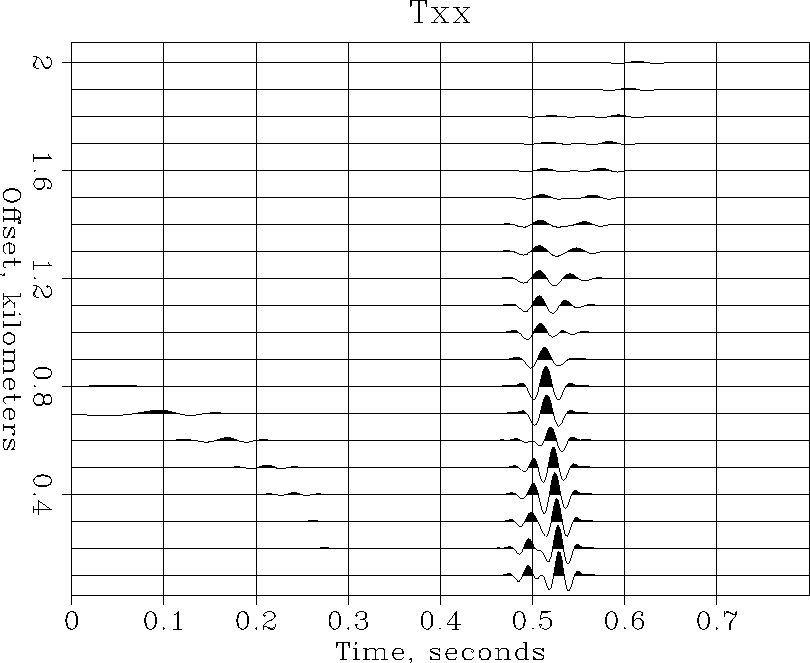 |
Figure 7
NMO < Txx.H vel=2.05 | Wiggle pclip=100 max1=.8 poly=y | Pspen
Velan < Txx.H nv=50 v0=1.40 dv=.08 > Txx_Velan.H echo 'label2="Velocity, km/s"' >> Txx_Velan.H Contour < Txx_Velan.H | Tube(
Velan does not update label2, so we used the standard
UNIX command ``echo'' to append a new label onto the end of
the history file.)
The P-wave arrival seems to stack in at a velocity of about 3.4 km/sec; let's move out at that velocity:
NMO < Txx.H vel=3.4 | Wiggle pclip=100 max1=.8 poly=y | TubeHyperbolic move-out flattens out the P wave almost perfectly.
The shear arrivals seem to stack in at a velocity of about 2.05 km/sec; let's move out at that velocity:
NMO < Txx.H vel=2.05 | Wiggle pclip=100 max1=.8 poly=y | TubeThe picked move-out velocity appears to split the difference between two distinctly non-hyperbolic shear waves.
![[*]](http://sepwww.stanford.edu/latex2html/foot_motif.gif) (See Figure
(See Figure ![[*]](http://sepwww.stanford.edu/latex2html/cross_ref_motif.gif) ).
).
 |
NMO < Txx.H vel=2.05 | Wiggle pclip=100 max1=.8 poly=y | Pspen